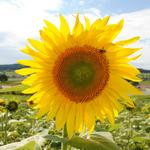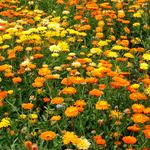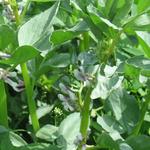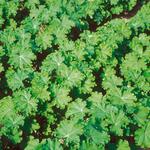E-Mail office(at)reinsaat.at
You can reach us by phone Monday - Thursday from 8:00 a.m. to 17:00 p.m and
on Friday from 8:00 a.m. to 16:00 p.m.
Green Manure
The cultivation of green manure significantly improves the soil health. On the field and in the garden alike, green manure has numerous positive effects on the soil. Due to their root penetration, the plants significantly contribute to achieving a good soil structure and increase the fertility by means of the addition of biomass. Depending on the selected cultivar, various soil properties can be promoted and the quality can be improved.
Deep-rooted varieties help to make nutrients from deeper layers available once again and loosen the soil. Leguminous fruit (clovers, vetches, peas, alfalfa, broad beans) bind nitrogen from the air through their symbiosis with nodule bacteria (rhizobia) and accumulate it in the soil.
Well-developed green manure crops additionally suppress the spreading of weeds and protect the soil from dehydration. Perennials protect the soil very well from eluviation and erosion during the winter period. Moreover, varieties which are not frost resistant may form a protective layer for the soil and can be easily incorporated in the soil during the spring period.
When selecting a green manure, the plant family of the subsequent cultivation has to be kept in mind (crop rotation). This means that no other cruciferous plants such as cabbage, radish or cress should be cultivated after the planting of mustard and that no peas, beans or similar vegetables should be cultivated following the planting of legumes.
In order to prevent an undesired spread or multiplication of the green manure, it is recommended to cut the crops on time before or at the flowering period, but in any case before the seeds ripen.
|
Art.no. |
Variety |
Growth and usage |
Frost resistance |
Restrictions regarding crop rotation |
Sowing date |
Sowing quantity |
|
Gr1 |
undemanding, rapidly growing, rapid soil shadowing, bee pasture |
not frost-resistant |
independent of crop rotation |
End of April - August |
600g/are |
|
|
Gr2 |
deep-rooting, enriches the soil with large quantities of organic substance; nitrogen collector |
perennial |
period of several years before planting peas and beans |
August - beginning of October |
600-800g/are |
|
|
Gr3 |
fast growing, soil shadowing, strong root development, produces a good soil structure; good bee pasture |
not frost-resistant (small plants can withstand mild winters) |
independent of crop rotation |
April - August for flowering; until the beginning of Sep-tember |
100-300g/are |
|
|
Gr4 |
good weed suppression, rapidly growing, climbing, intense root penetration; provides the soil with nitrogen |
not frost-resistant |
period of several years before planting peas and beans |
April - end of July |
1-1,25kg/are |
|
|
Gr5 |
fast growing, rapidly covers and intensely roots the soil |
not frost-resistant |
not before the cultivation of other cruciferous plants (cabbage, cress, radish, rape etc.) |
April/May - September |
200-300g/are |
|
|
Gr6 |
good root penetration; for all soils; drought-resistant and oxygen-forming legume |
not frost-resistant |
period of several years before planting peas and beans |
March - September |
1,5 - 2kg/are |
|
|
Gr7 |
in combination binds large quantities of nitrogen; fast growing; leaves a fine, crumbly soil surface |
not frost-resistant |
period of several years before planting peas and beans |
April - September |
1,5 - 2kg/are |
|
|
Gr8 |
very fast growing; good weed suppression; intense root penetration; flowers of red colour; good preceding crop effect |
frost-resistant |
period of several years before planting peas and beans |
April - mid-September |
300-400g/are |
|
|
Gr9 |
for biennial use |
frost-resistant |
not before the cultivation of legumes |
April - September |
300-400g/are |
|
|
Gr10 |
for multiple cutting and annual cultivation; rapid soil covering; nitrogen-fixing; requires warmth and humidity; bee pasture |
certainly frost-resistant |
not before the cultivation of legumes |
May - end of July |
200-300g/are |
|
|
Gr12 |
important nitrogen supplier; forms a deep root system |
perennial |
not before the cultivation of legumes |
March - September |
150 - 200g/are |
|
|
Gr14 |
high green matter yield, also loosens deep soil layers; leave on the field over the winter as it is a good nourishment for insects, bees and bumblebees |
not frost-resistant |
period of several years before planting peas and beans |
End of February - September |
400-800g/are |
|
|
Gr16 |
supplies large quantities of nitrogen and provides for an optimum soil condition; recommended as a preceding crop for plants with a high demand for nutrients |
not frost-resistant |
period of several years before planting peas and beans |
End of February - September |
1,6 - 2,2,kg/are |
|
|
Gr17 |
high green and dry matter yields, high quality fodder; nitrogen-fixing; enhances the soil condition |
perennial |
not before the legumes |
March - September |
20-25kg/ha |
|
|
Gr18 |
good ground-cover plant; enhances the soil health; makes the soil crumbly; plant which is appreciated by bees |
not frost-resistant |
independent of crop rotation |
March - August |
80 - 120g/are |
|
|
Gr19 |
good ground-cover plant, plenty of leaf mass; takes very well to cutting; large taproots, loosens the soil optimally |
not frost-resistant |
independent of crop rotation |
April-June |
100g/are |
|
|
Gr20 |
Fast-growing cruciferous plant with strong taproots, loosens soil compaction and activates soil life. Self-seeding must be prevented on right time by mulching. Early sowing provides good nematode control in the soil. |
not frost-resistant |
not before the cultivation of other cruciferous plants (cabbage, cress, radish, rape etc.) |
September |
25-30 kg / ha |
|
|
Gr21 |
Perennial, fast-growing, quick-covering green manure plant suppresses weeds, protects the soil from silting up through rain and intensively loosens it through deep rooting. Leaves and roots input improve the soil structure |
perennial |
not before the legumes |
April-October |
400-500g/are |
-
Buckwheat
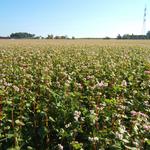
Winter Vetch
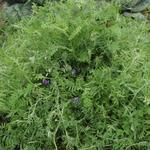
Phacelia
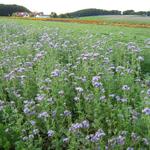
Summer Vetch
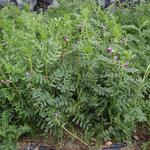
Peavine
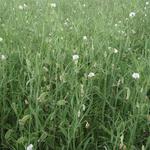
Yellow mustard
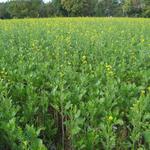
Leguminous mixture
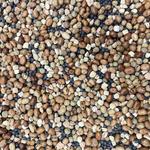
Crimson Clover
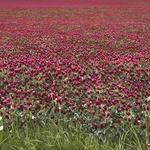
Clover Grass
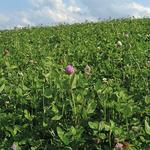
Alexandrine clover
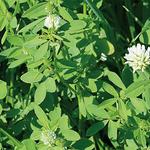
Alfalfa
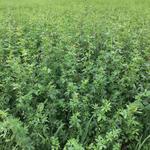
Red Clover
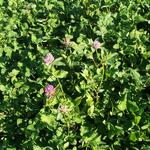
White clover
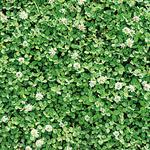
Oil radish
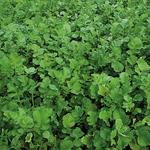
Sunflower
My accountLog inOrder our Catalogue 2024!Order free of charge (in German) or download PDF English (36MB)

